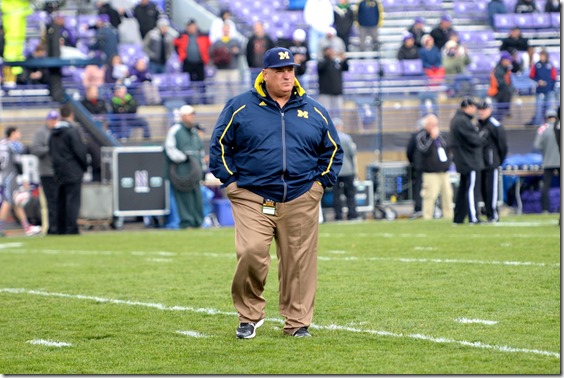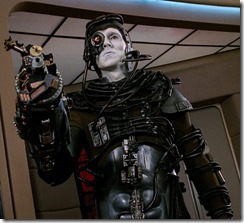Note: Most of of my long "here's a handy guide for Borges complaining" post got deleted. Here's a few bits of it.
So I did the thing where I update (finally) the UFR database, then self-UFR the last game because this damn column comes before Brian does the UFR for the latest one, and then I say things about all the things. Let's just cut to the things:
Yards per play (# attempts in parentheses) of normal downs by formation.
| Opponent | Shotgun | Ace | I-Form | Pistol | Tackle Over | Goal line | Total YPP |
|---|---|---|---|---|---|---|---|
| Central Michigan | 6.7 (17) | 7.7 (21) | 7 (19) | 3 (2) | - | 1.5 (2) | 6.8 |
| Notre Dame | 7.4 (14) | 10.6 (22) | 3.2 (13) | 4.4 (14) | - | - | 7.0 |
| Akron | 21.8 (11) | 5.6 (19) | 4.5 (18) | -1.8 (5) | - | - | 7.6 |
| Connecticut | 5 (25) | 2.8 (19) | 1.8 (12) | 3.5 (4) | - | 4 (1) | 3.6 |
| Minnesota | 6.1 (9) | 4.9 (7) | 1.7 (7) | - | 5.8 (20) | - | 5.0 |
| Penn State | 3.6 (16) | 7.7 (22) | 3.8 (9) | 6.4 (7) | 0.8 (11) | - | 4.8 |
| Indiana | 7.2 (34) | 14.1 (14) | 8.8 (16) | 4 (1) | 11 (8) | - | 9.2 |
| Michigan State | 5.3 (23) | 7.4 (7) | 1.8 (4) | 0.1 (12) | - | - | 4.0 |
| Nebraska | 4 (23) | 0.3 (7) | 1.8 (12) | 6.3 (6) | - | 0 (1) | 3.1 |
| Northwestern | 5.4 (16) | 4.7 (21) | 5 (24) | 11 (3) | - | -1 (2) | 5.1 |
| Iowa | 2.7 (23) | 1.2 (9) | 5 (13) | 4 (2) | - | - | 3.1 |
| Total | 6.1 (33%) | 6.7 (27%) | 4.6 (23%) | 3.6 (9%) | 5.5 (6%) | 0.8 (1%) | 5.6 |
What's left out are 2-minute drills, 3rd/4th down and longer than 6, and any short situations.
And yards per play by how spread, i.e. the # of receivers in formation, they got each game, with % of plays they lined up that way in parentheses:
| Opponent | Avg WRs | None | Big | 2-wide | 3-wide | 4-wide | Empty |
|---|---|---|---|---|---|---|---|
| Central Michigan | 2.33 | 1.5 (3%) | 2 (3%) | 8.1 (56%) | 7 (33%) | -1.3 (5%) | - |
| Notre Dame | 2.29 | - | -0.8 (6%) | 8.6 (59%) | 5.5 (35%) | - | - |
| Akron | 2.23 | - | 9 (4%) | 5.5 (70%) | 13.5 (26%) | - | - |
| Connecticut | 2.33 | 4 (2%) | 2.5 (7%) | 2.9 (49%) | 4.5 (43%) | - | - |
| Minnesota | 1.70 | 2 (5%) | 4 (35%) | 5.4 (47%) | 7.7 (14%) | - | - |
| Penn State | 2.14 | - | 5.7 (14%) | 5.2 (58%) | 3.7 (28%) | - | - |
| Indiana | 2.66 | -0.5 (3%) | 16.2 (7%) | 9.7 (40%) | 10.7 (23%) | 6.5 (27%) | - |
| Michigan State | 3.00 | - | -8 (2%) | 4.1 (26%) | 4.8 (41%) | 3.6 (30%) | - |
| Nebraska | 2.47 | 0 (2%) | 3.7 (6%) | 0.5 (43%) | 6.3 (41%) | 1.3 (8%) | - |
| Northwestern | 2.15 | -1 (3%) | 2.2 (8%) | 4.9 (64%) | 5.7 (23%) | 18.0 (3%) | - |
| Iowa | 2.91 | - | -1 (2%) | 3.6 (38%) | 2.1 (30%) | 3.8 (26%) | 3.5 (4%) |
| All games | 2.38 | 0.8 (2%) | 4.6 (8%) | 5.7 (51%) | 6.2 (30%) | 4.8 (9%) | 3.5 (<1%) |
My base assumption was that when Michigan goes more spread they're putting the B+ receiving threat of Dileo, or the C+ receiving of Chesson on the field, and usually moving the C- blocking/D- receiving of A.J. Williams or Joe Kerridge off of it.
The Fetal Position Theory of Offense
However going to wider looks didn't seem to do much good against Iowa or Michigan State (that one at least M was behind for a good portion). That's because of a lot of things, one of those being that despite spreading it out, Michigan's been leaving those guys anyway. Both players are probably the best blockers of their position groups, but that's not saying much. Meanwhile they give up pretty much any threat of doing something other than blocking, and opponents have used that opportunity to tee off. Since neither is good enough to pick up a majority of those blitzes, there've been a lot of messes in the backfield as a result.
Iowa blew up Michigan's penultimate drive with back-to-back A-gap blitzes. On the first Kerridge was in to pass block and got lit up by the blitzer, who was immediately into Gardner. On the second they had Green in there and had him run a pattern that the defense ignored. With immediate pressure Gardner ignored Green and chucked a pass into an unready Funchess's back. That is progress, but the lesson is just doing the thing you ought to be good at doesn't fix the problem; you have to practice doing it as well.
Execution Issue
But even when they do spread like a boss, there's a lot of things going wrong. Look that this play, the penultimate (so rare you get to use that word twice in a day) offensive one of the game for Michigan:
Starts at 0:53:38 if browser player isn't working.
There's so many ways to win here, but nothing comes of them.
1. There's bubble action. Though of course they don't throw it despite it being open because this isn't a check (Michigan's checks are only to ISO or the pistol speed option). And Funchess, not Gallon or—infinite ARRRGHHH—Norfleet, is still the designated bubble screen guy. Anyway with the safety deep and bailing, the bubble is 7-12 free yards if Michigan can recognize it and throw it, but that has to be built into the offense. The way Borges has been using the bubble screen is on called plays. It was cool that he threatened it out of a more open look—previously it seemed his capitulation to this one play was predicated solely on its usefulness for running from heavy sets. The way Rodriguez used—and the way Urban will deploy it against us on Saturday—is it was as an instant check to things opponents did to hamper his zone read game.
 |
| Fuller captured one of the ultra-rare instances of a shotgun-Kerridge play that wasn't him blocking. |
2. Tipped zone blitz. That end spread out and the obviously blitzing linebackers suggests there's going to be a zone blitz pre-snap but there's just 6 seconds on the playclock at that moment so they don't really get to adjust to that. Still, this is a win for an outside run, since that DE is going to drop back and stand where a great block would normally deposit him.
3. Center and guard versus linebackers. This ought to be a win. Those LBs stunt their blitz a bit so that the first gets a 2-for-1 and the second can slice in free. By coming up pre-snap they made it harder for Glasgow to get off the combo and pick up his guy, but he just has to come off the double and take a half-step sideways to block that gap. Here's where agility in a spread center helps you, and where the lack of it hurts Glasgow, even when he knows what he's supposed to do.
4. Magnuson starts the play far to the playside of that tackle. That's a big advantage for the offense. The DT indeed slants into Mags, then chucks him and gets to the outside, totally blowing that advantage.
5. It's Devin Gardner and Fitz Toussaint in the backfield, so chances of a missed tackle are pretty good. However Gardner is at about 45% right now because he's been beat up so badly in the last few weeks, and Toussaint's pass blocking problems are part of what's inviting these interior blitzes, since the downside for the defense (having that guy violently cut to the ground while a receiver slants into the unoccupied territory) is unlikely from Michigan's offense.
Also Jackson's is hesitant with his block, and is set up to spring Funchess to the outside, so that nickel guy is going to be free to tackle after just a few.
So going to a spread isn't going to fix everything. The formation did give them more room and opened up the bubble, but Michigan can't access those yards because they come to the line too late to see anything in the defense and adjust to it, and hasn't practiced doing that. The defensive playcall made Glasgow's athleticism the key to the key block, but that's not Glasgow's strength. And crappy blocking elsewhere meant this play was still dead in four ways. Such is Michigan's offense. They're not all good at any one thing, and they don't do the things that some of them are good at, and the end result is a lot of plays where guys are forced to execute the things they're bad at.
The Little Bubble Package: Dead?
Here's how the Bubble-or-Run package has fared:
| Opponent | Runs | Bubbles | YPA |
|---|---|---|---|
| Michigan State | 0 | 1 | 8.0 |
| Northwestern | 7 | 3 | 5.4 |
| Iowa | 5 | 2 | 2.4 |
They've adapted.
Iowa was crashing the backside SAM and had their safety ready to pounce on the bubble (even if Funchess didn't drop one). I think there's something you can do about that (dare I say rollout?). Running it against Northwestern was cool, but I would have expected Borges to know by now that's it's scouted and lead off with that third counter. Or add it to the scrap heap with the rest of the fancy things he's tried. I'm sure a picture pages is coming so I won't get further into it.

